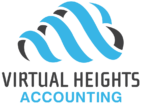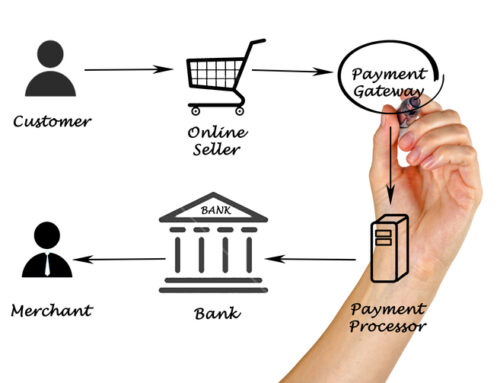Profit First isn’t just a book by Mike Michalowicz, it’s a whole business lifestyle that even includes a certification. The book was first published in 2014. Since then there have been iterations created for specific industries like dentists, micro gyms, contractors, and e-commerce sellers.
Michalowicz has reframed the equation sales, minus expenses, equals profits so that it reads: Sales, minus profits, equals expenses. This is the gist of Profit First. Profit before expenses. It’s an alternative way of looking at a budget. You take the profit out of your sales then force yourself to budget your expenses based on what’s left.
The Profit First Way
Michalowicz argues that putting profits ahead of expenses has the effect of prioritizing profit in your business. This causes us to think about our spending habits more carefully (in theory).
The Profit First method assumes that your business spending is out of control, you have no money management skills, and you’re looking for a better way to manage your funds. Chapter 1 of the book is even titled: Your Business is an Out-of-Control Cash-Eating Monster. This isn’t true for everyone.
It’s difficult to summarize a whole book in a blog post, but in practicing the Profit First way, you set up a recommended five bank accounts. These accounts are intended to keep your tax payments, owner’s payments, operating expenses, revenue, and profit separate. The five recommended accounts are:
- Revenue
- Expenses
- Tax
- Owner’s Pay
- Profit
Since you now have five separate bank accounts, you also need to set up five accounts in your general ledger. Michalowicz recommends creating a new account every time you want to set money aside with a specific goal in mind.
But how do you know how much money to put into the accounts?
Michalowicz suggests the specific percentages to be set aside for each account based on what he labels “Real Revenue.” You can find a chart in this blog post by NorthOne. For Canadian companies, there are two problems with this chart: It’s based on the US tax system, and it assumes all businesses operate the same. Industry differences tell us that’s not the case. Fixed and variable costs can vary widely across industries.
While the theory behind Profit First is somewhat solid, it can feel a bit overwhelming to have to set up separate bank accounts for all these different payments. Not to mention the administrative work of transferring amounts to various accounts.
For people who already struggle to manage their cash flow, this method can be out of their reach. For others, it seems like too much work, so they never take the time to set it up. At Virtual Heights Accounting, we prefer an equally viable, yet less complicated method.
Create a Safety Net
Maintaining the books and records for five separate bank accounts can be time consuming and increase your accounting fees. Life is uncertain, and it makes sense to have a cash cushion in case you need it. Creating a safety net can only happen if you have a good handle on your business’s cash flow.
In personal finance, a good safety net is three to six month’s worth of expenses. Depending on your business, this could be an impossible dream. The point is, don’t let your bank account get close to zero. Keep a few thousand dollars in there at all times to account for any emergencies that might pop up.
You don’t have to create a separate account for your safety net, rather just keep a close eye on your business account. Hint: You should be doing this anyway!
Pre-Pay Your Taxes
Did you just gasp or choke there? Who wants to prepay their taxes? The thing is, if your business is profitable, why wouldn’t you prepay your taxes? You’re going to have to pay them anyway. Paying them early means you won’t have to pay interest or penalties on late payments. Why would you want to give the government extra money if you don’t have to?
Once your corporate taxes are over $3,000 annually, the Canada Revenue Agency (CRA) requires you to pay monthly instalments going forward. Setting aside your monthly instalment requirement in a savings account is one way to guarantee you won’t spend your corporate tax instalment money on something else.
Did you know that money collected for federal and provincial sales taxes isn’t your money?
You are required to submit what you collect in sales taxes to the federal and/or provincial government, depending on what industry you’re in. Both federal and provincial governments offer deductions against the sales taxes owed as a thank you for collecting the taxes on their behalf.
In order to make sure you have the sales tax payment when required, you’ll want to set that money aside. A separate account (even the same one as your corporate tax payments) will ensure you have the money when it comes time to remit your sales tax collections to the government.
Set Yourself Up on Payroll
If you intend to pay yourself a wage or you continually draw money out of your company, you’ll want to make sure you are making payroll remittances regularly. Sending a payroll remittance to the CRA every month for yourself is much more affordable than doing it at the end of the year when your accountant calculates how much money you’ve taken out of your company. This could result in a hefty remittance you aren’t prepared for or possible interest and penalties.
Your accountant can calculate your monthly payroll remittance based on the amount of money you typically withdraw from your company bank account. Estimating wages paid to you as an owner is an important tax saving strategy.
Whether you want to create a cushion for unexpected expenses or plan for tax payments, cash flow management doesn’t need to be complicated. Contact us to learn more about how we can help you manage your company’s cash flow.






